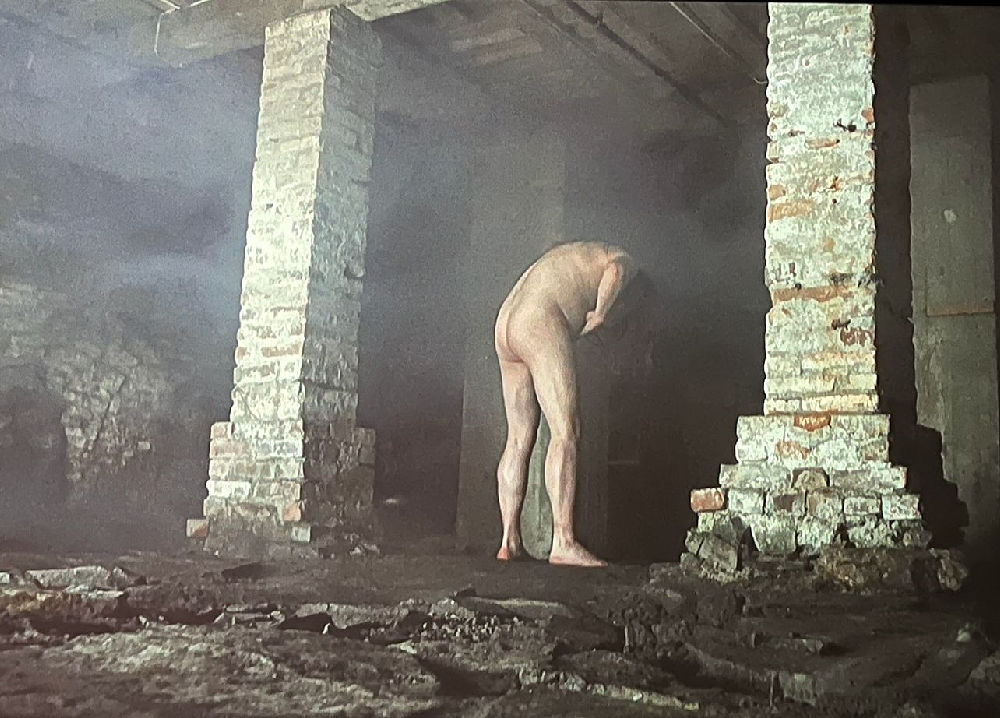
Viktor Pedersen
Viktor Pedersen

Viktor Pedersen
|
Le Corps comme archive vivante, l'exploration des frontières intimes
Dans l’œuvre de Viktor Pedersen, le corps humain n’est ni un objet figé ni un simple support matériel : il est un territoire mouvant, une membrane poreuse où s’entrelacent mémoire, biologie et métamorphose. Son art déconstruit les frontières artificielles entre l’individu et son environnement, révélant le corps comme un espace de transformation, de tension et de vulnérabilité brute. Son approche est résolument organique : la chair, les fluides, la peau ne sont pas de simples surfaces, mais des empreintes vivantes, des témoins de notre relation profonde avec le non-humain. Pedersen joue avec les textures et les perceptions pour interroger les limites entre conscience et instinct biologique, entre humain et environnement. À travers ses compositions troublantes—qu’il s’agisse de gros plans de textures corporelles, de mouvements lents et chorégraphiés ou de silhouettes immergées dans des paysages élémentaires—il met en lumière ce qui, habituellement, échappe au regard. Au cœur de sa pratique se trouve une réflexion sur notre propre perception du corps. Ses œuvres ne se contentent pas de représenter l’humain, elles nous obligent à le ressentir de l’intérieur. Dans To See Without Man, l’absence même du corps humain devient paradoxalement une présence amplifiée : la nature, la matière organique et les textures numériques semblent se souvenir de lui, en garder la trace, en écho silencieux. Une dimension rituelle imprègne son langage artistique. Pedersen ne représente jamais le corps comme une entité isolée : il est toujours en dialogue avec le vivant, qu’il s’agisse des micro-organismes, des plantes, des forces invisibles qui traversent notre existence. Son usage du scan 3D, des textures synthétiques et des manipulations digitales ne vise pas à nier l’humain, mais à reconfigurer notre compréhension de l’incarnation, dans un monde où la technologie et la nature s’entrelacent au lieu de s’opposer. En dépouillant le corps de ses repères familiers, il nous oblige à affronter ce qui demeure sous la surface—non seulement physiquement, mais aussi psychologiquement. Ses œuvres posent des questions essentielles : Que reste-t-il quand l’identité est débarrassée de ses constructions sociales ? Où finit le corps et où commence le monde ? À l’heure où nos existences sont de plus en plus médiatisées par les écrans et les structures artificielles, Pedersen nous rappelle que nous sommes, avant tout, des êtres organiques, périssables, intimement connectés aux forces invisibles qui nous façonnent. Il ne donne pas de réponses. Il nous invite à nous approcher, à regarder autrement, à sentir notre propre présence résonner dans ses œuvres. |
Exploring the Threshold Between Human and Non-Human
In an era where the boundaries between the organic and the artificial, the human and the post-human, are increasingly blurred, Viktor Pedersen stands as a visionary artist crafting new narratives of existence. His work is a deep interrogation of autonomy, perception, and the evolving relationship between humans and non-human entities—whether nature, technology, or something beyond our current understanding. Pedersen’s artistic universe is one of hybrid realities, where flesh and data, ritual and algorithm, nature and synthetic landscapes intertwine. Using 3D scans, generative images, soundscapes, and performance, he constructs immersive experiences that challenge our assumptions about identity, consciousness, and materiality. His works, such as To See Without Man, explore a world in which nature reclaims its agency, questioning whether humanity is an essential presence—or merely an interruption in the grand cycle of existence. His work deeply engages with the corporeal dimension of human existence, portraying the body as an organic, malleable entity—both a vessel of transformation and a site of decay. Through raw, almost visceral imagery, Pedersen dismantles the idea of the body as a fixed structure, exposing it as a porous, living membrane that interacts with its environment in ways both intimate and unsettling. His visuals, whether through close-ups of skin textures, bodily fluids, or uncanny anatomical distortions, blur the distinction between the biological and the symbolic, the human and the elemental. Fascinated by ethnobotany and ancestral knowledge, Pedersen incorporates elements of medicinal and ritualistic plants into his practice. His art suggests an alternative way of engaging with the world—one that listens rather than dominates, that perceives rather than imposes. In doing so, he offers a poetic and unsettling vision: what if intelligence is not solely human? What if perception can transcend the limits of biology? His visual language is raw yet futuristic, borrowing from science fiction, anthropology, and speculative philosophy. He does not merely depict a post-human world—he builds living artifacts of its emergence. Through digital decay, fragmented figures, and shifting textures, his work evokes a world in transformation, where the past and the future collide in the unstable terrain of the present. More than an artist, Viktor Pedersen is an alchemist of realities, blending technology and organic matter into a discourse that transcends disciplines. His work is an invitation—to question, to feel, to step beyond the illusion of human-centered narratives. In his worlds, we are not the protagonists, but merely one form of intelligence among many. A bold and necessary voice in contemporary art, Pedersen is not just imagining the future—he is making us feel it.
Edith Herlemont - Lassiat
Oslo, mars 2025 |